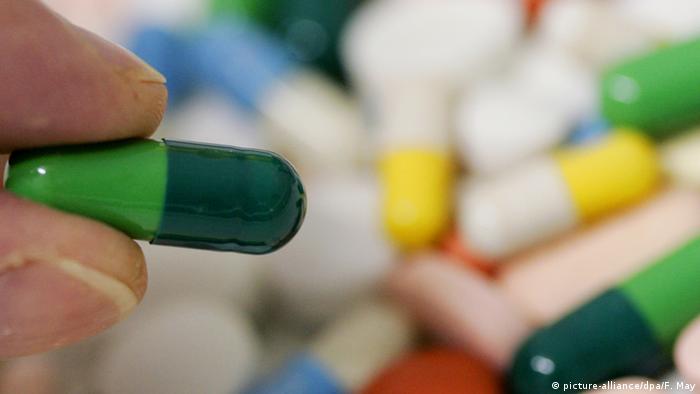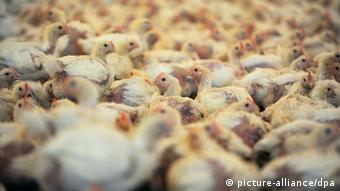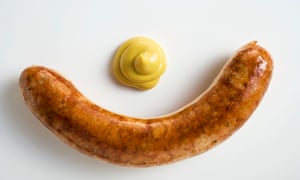'Consumer Reports' Says Laundry Pods Are Too Risky To Recommend
JULY 16, 201511:15 AM ET
SCOTT HENSLEY
Can you spot the four laundry pods?CR/John Powers and Ariana Salvato/Apotrophe/Courtesy of Consumer Reports
Consumer Reports, the granddaddy of advice-givers on what to buy, won't recommend laundry pods containing liquid detergent anymore. The risks to small kids are just too high, the magazine says.
In its latest tests, eight different single-use packets were rated very good at cleaning. That wasn't a strong enough showing to put any of them among the top three laundry detergents, which got the magazine's recommended check mark.
But the real problem is safety. Despite some changes in packaging and a heightened awareness of the risks to kids, the number of health incidents involving the pods continues to climb.
Through June, 6,046 incidents involving pods and kids younger than 6
have been reported to the American Association of Poison Control Centers. The exposures, as the AAPCC calls them, include ingestion, inhalation and contact with eyes and skin. Health problems after exposure include wheezing, gasping, extreme sleepiness, vomiting and corneal abrasions.
If the incidents continue to be reported at the current pace, they'll exceed the 11,714 that were registered by the poison control centers in 2014.
 i
iReports to poison control centers of exposure of children 5 and younger to laundry detergent packets. Data for 2015 are through June 30.NPR/American Association of Poison Control Centers
Procter & Gamble, maker of Tide pods, didn't immediately respond to a request for comment.
"Given the continued danger, we have made the decision to not include pods on our list of recommended products,"
says the article in the September issue of the magazine. "And we strongly urge households where children younger than 6 are ever present to skip them altogether." The magazine says its "new position doesn't apply to laundry (or dishwasher) pods that contain powder, because injuries associated with them are less frequent and less severe."
The AAPCC says households with children should take precautions with the pods. "Our official stance from a poison prevention and education standpoint is that single-use laundry packets should be kept up, away and out of sight of children," Krista Osterthaler, national director of outreach for AAPCC, tells Shots. The poison control centers would also like to see packaging improvements to make the products more child-resistant and additional labeling to tell consumers about the dangers.
"We would also support efforts in reformulation to make them less toxic," she says. "We just don't know what that looks like."
Update 2:35 p.m. ET: Procter & Gamble provided a statement by email:
"We take every incident of accidental exposure seriously and believe these accidents are preventable. Less than 1% of the calls to Poison Control centers were related to laundry pacs, and the vast majority of these calls to Poison Control centers resulted in minor or no medical treatment. Today, we are seeing encouraging signs that the rate of accidents relative to the number of P&G laundry pacs sold is declining at a rate of 28 percent."
Laundry detergent podFrom Wikipedia, the free encyclopedia
Laundry detergent pods are products containing laundry soap, softener and other detergents enclosed in plastic discs. Notable manufacturers of these pods include
Arm & Hammer,
Purex, and
Tide.
[1] They first became popular in February 2012 when they were introduced by
Procter & Gamble as Tide Pods.
[1]Poisonings[
edit]
Concern has been raised over children accidentally being exposed to laundry pods because their appearance resembles that of candy.
[2]In 2012, in response to a child swallowing Tide Pods, Procter & Gamble said they would make this product more difficult to open by adding a double latch to the lid.
[3] In 2013,
Consumer Reports stated that there had been nearly 7,700 reported incidents in which children age 5 or younger had been exposed to laundry pods,
[1] and that year, one child from Florida died after ingesting a pod.
[4] In 2014, a study published in
Pediatrics found that from 2012 to 2013, more than 17,000 calls were made to poison control centers about children who had exposed to the pods.
[5]References[
edit]
^
Jump up to:a b c "Laundry detergent pods remain a health hazard". Consumer Reports. March 2013. Retrieved 11 November 2014.
Jump up^ Jaslow, Ryan (19 October 2012).
"CDC warns laundry detergent pods pose health risk". CBS News. Retrieved 15 November 2014.
Jump up^ Wohl, Jessica (25 May 2012).
"Tide to change Pods lid over child safety concerns". Reuters. Retrieved 11 November 2014.
Jump up^ Mendoza, Dorrine (16 August 2013).
"Baby dies after ingesting laundry detergent pod". CNN. Retrieved 15 November 2014.
Jump up^ Valdez, A. L.; Casavant, M. J.; Spiller, H. A.; Chounthirath, T.; Xiang, H.; Smith, G. A. (10 November 2014). "Pediatric Exposure to Laundry Detergent Pods". PEDIATRICS.
doi:
10.1542/peds.2014-0057.

















